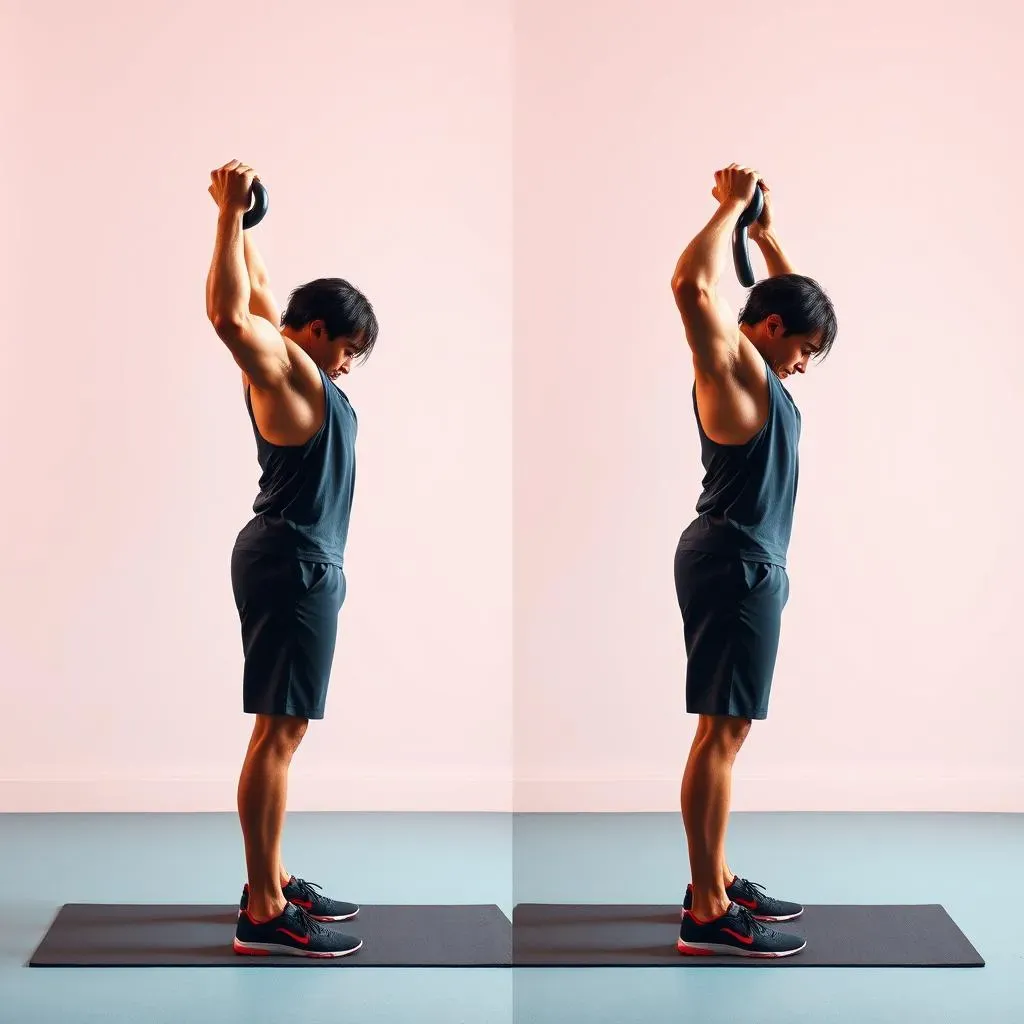Table of Contents
Ever feel like your lower back is a grumpy old man, constantly complaining? Well, maybe it's time to introduce it to the kettlebell back extension. It's not some magical cure-all, but this exercise can be a game-changer for strengthening your lower back, glutes, and hamstrings. Think of it as giving your spine a supportive hug. This isn't about throwing around heavy weights, it's about controlled movements, building a solid foundation, and making your back feel less like a creaky door. We'll start by explaining what a kettlebell back extension actually is, then move to a step-by-step guide on how to do it correctly. Finally, we'll discuss common mistakes people make and how to avoid them, so you can reap all the benefits without any unnecessary aches. So, are you ready to get started and give your back the strength it deserves? Let's jump in and explore the kettlebell back extension!
What is a Kettlebell Back Extension and Why Bother?

What is a Kettlebell Back Extension and Why Bother?
Okay, so you've probably seen people doing those weird bendy things with a kettlebell, right? That, my friend, might just be a kettlebell back extension. It’s not some strange yoga pose, but a movement where you hinge at your hips, letting the kettlebell hang down and then you use your lower back, glutes, and hamstrings to pull yourself back up to a standing position. Think of it like a reverse crunch, but standing up. Now, why bother? Well, most of us spend way too much time hunched over desks or phones, which weakens our back muscles. This exercise is like a wake-up call for those sleepy muscles. It strengthens your lower back, which can improve your posture, reduce back pain, and even help you lift things more safely. Plus, it also works those glutes and hamstrings, giving you a nice, all-around posterior chain workout. It's like hitting three birds with one well-aimed kettlebell.
StepbyStep Guide to Perfect Kettlebell Back Extensions

StepbyStep Guide to Perfect Kettlebell Back Extensions
Getting Ready:
The Setup
Alright, let's get down to business. First, you'll need a kettlebell. Don't go grabbing the heaviest one you can find, start with something that feels manageable. Stand with your feet about shoulder-width apart, and hold the kettlebell with both hands in front of you. Think of it like you're about to do a deadlift, but you won't be lifting from the floor. Now, hinge at your hips, pushing your butt back and letting the kettlebell hang down between your legs. Keep your back straight, like you have a broomstick taped to it, and your head neutral, not looking at your toes.
It's crucial that you feel a stretch in your hamstrings. If you don't, you might need to hinge a bit more. This is the starting position. It might feel a bit awkward at first, but trust me, once you get the hang of it, it'll become second nature. It’s like learning to ride a bike, wobbly at first, but soon you’ll be cruising.
The Movement:
Extending Back Up
Now, the fun part. From that hinged position, squeeze your glutes, hamstrings, and lower back, and pull yourself back up to a standing position. Imagine you're trying to stand up straight by pushing your hips forward. The kettlebell will naturally come up with you. Keep your back straight, and don't round it. If you start to feel the movement in your lower back, then you are doing it correctly. Don't overextend at the top; just come up to a straight, standing position.
It's all about control, not speed. Don't try to jerk yourself up. Make sure you're using your muscles to control the movement, both on the way down and on the way up. It's like a dance with the kettlebell, a slow, controlled tango. If you're feeling it in your lower back, that means you're engaging the right muscles. If you’re not, take a break and check your form. The key is to focus on those muscles that should be doing the work.
Step | Action | Focus |
|---|---|---|
1 | Hinge at hips, kettlebell hangs down | Straight back, hamstring stretch |
2 | Squeeze glutes, hamstrings, lower back | Controlled movement, no jerking |
3 | Return to standing | Straight posture, no overextension |
Common Mistakes and How to Avoid Them When Doing Kettlebell Back Extension

Common Mistakes and How to Avoid Them When Doing Kettlebell Back Extension
The Rounded Back:
A Recipe for Disaster
Okay, so one of the biggest no-nos I see is people rounding their back during the kettlebell back extension. It's like they're trying to make a C shape with their spine, and that’s a one-way ticket to back pain city. When you round your back, you're not engaging the right muscles, and you're putting unnecessary stress on your spine. Imagine trying to lift a heavy box with a bent back – not a good idea, right? Same principle here. Keep that back straight like you're trying to balance a book on it. Focus on hinging at your hips, not your spine. It's like you're bowing to the kettlebell, not collapsing into it.
To avoid this, think about keeping your chest open and your shoulders pulled back. It's like you're trying to show off your awesome posture. Also, don’t try to go too deep. It’s better to do a smaller movement with perfect form than a big movement with a rounded back. Start slow, focus on the hinge, and keep that back straight. It's about quality, not quantity. You wouldn't want to build a house on a shaky foundation, would you? Same goes for your back.
Overextension:
Too Much of a Good Thing
Now, on the flip side, some people get a little too enthusiastic and overextend their back at the top of the movement. It's like they're trying to bend backward, and that’s not what we're going for. Overextension puts a lot of stress on your lower back joints, and it can lead to pain and discomfort. You want to come up to a straight line, not try to become a human pretzel. Think of it like you're standing tall, not leaning back like you're on a beach chair.
To fix this, focus on squeezing your glutes and hamstrings to bring you back up, and stop when you reach a straight, standing position. Don’t try to push past that point. It's like you're trying to stand tall, not show off your flexibility. Also, make sure you're not using momentum to get to the top. Everything should be controlled, like you're moving in slow motion. It's about being precise, not jerky. Remember, it's not a competition, it's about strengthening your back safely and effectively.
Mistake | How to Avoid It |
|---|---|
Rounded Back | Keep back straight, hinge at hips, chest open |
Overextension | Stop at a straight standing position, control movement |
Using too much weight | Start light, focus on form |
Wrapping Up: Your Journey to a Stronger Back with Kettlebell Back Extensions
So, there you have it: the kettlebell back extension, a simple yet powerful tool for building a robust and resilient back. It's not about overnight transformations; it's about consistent effort and proper form. Remember to start slow, focus on the movement, and listen to your body. Don't get discouraged if you don't nail it on the first try. Like any good relationship, it takes time, patience, and a bit of understanding. Incorporate this exercise into your routine, and you'll not only be strengthening your back but also improving your posture and overall stability. Now go forth, grab that kettlebell, and show your back some love. You might even find that grumpy old man starts singing a new tune!